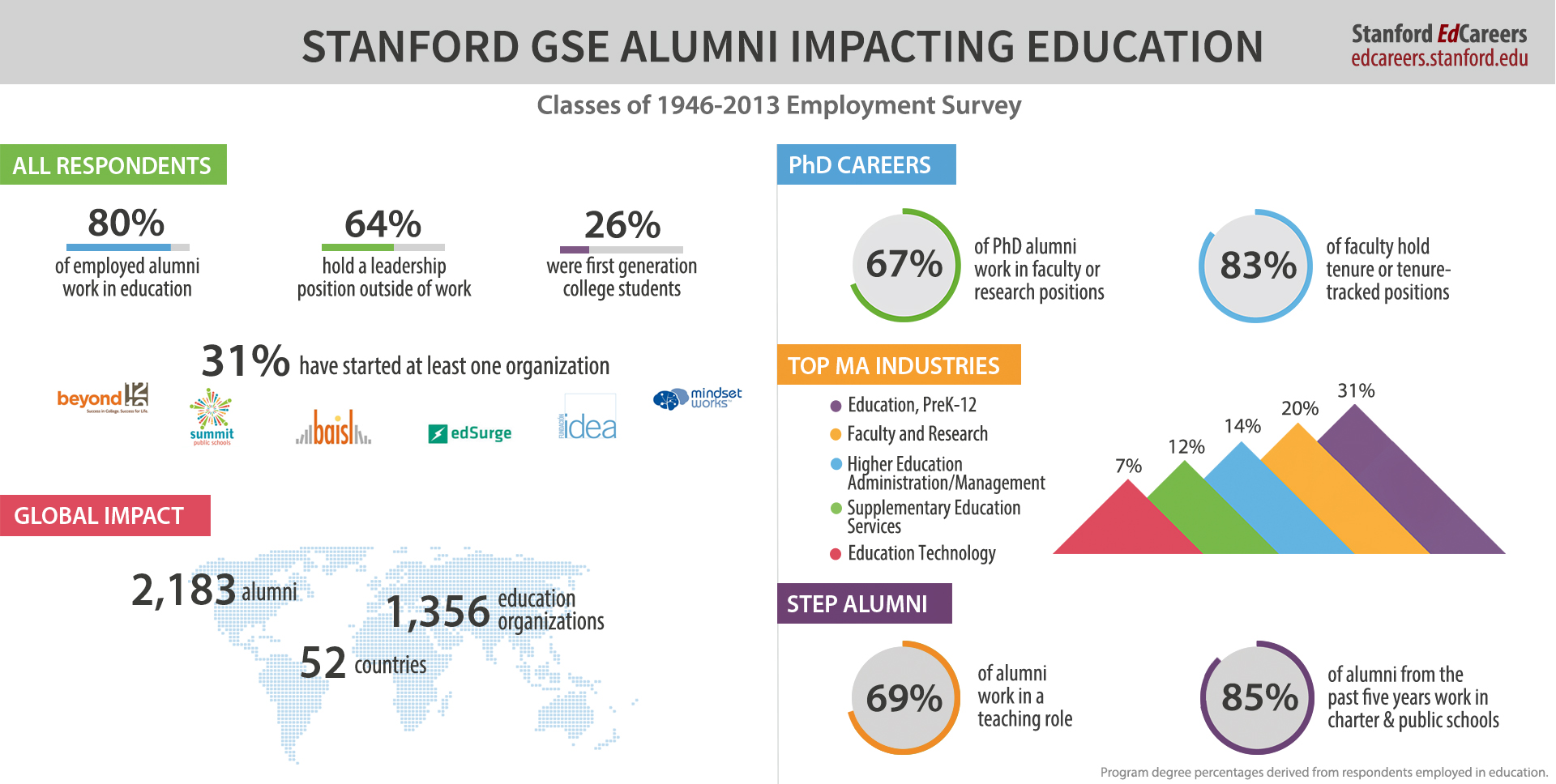
A new survey of Stanford Graduate School of Education alumni provides for the first time extensive data that documents the deep commitment its graduates have to education and how they’ve contributed to the field.
The findings show that four of five survey respondents who are currently employed were working as professors, edtech entrepreneurs, K12 teachers and top school administrators, among other jobs in education. This figure does not include respondents who were not working, such as those who retired after lifetime careers in education.
The survey also found that nearly two-thirds of the respondents hold leadership positions outside their professional roles. And it offers additional evidence to support a previous report’s conclusion that graduates of the Stanford Teacher Education Program (STEP) remain classroom teachers longer than is the national norm.
“While we have long known that our alumni are dedicated to improving education, these survey results show in greater detail the significant roles that our students play after they receive their diplomas,” said Deborah Stipek, the I. James Quillen Dean of the Stanford Graduate School of Education.
The survey covers alumni from the last eight decades — whether they earned doctorates, non-teaching master’s degrees or master’s degrees in teaching — including one who graduated in 1946, and it is unique in its scale. Stanford EdCareers, the school’s career resource center, spent 10 months reaching out to alumni, achieving a response rate of 48 percent, or 3,818 graduates.
The results presented in the 22-page report offer a snapshot of the distinct roads followed by students in the different degree programs. Looking at the pool of respondents who said that they were currently employed in education, the survey revealed that:
“The survey affirms what we have personally witnessed — that our alumni are playing key roles in the field of education,” said Nereyda Salinas, director of Stanford EdCareers. “In many respects we were pleasantly unsurprised by the results.”
But there are at least two findings that were unexpected, she added. Nearly one-third of respondents indicated that they launched an entrepreneurial venture. Alumni have started up a high school foundation, a charter school system, a nonprofit that helps underrepresented students graduate from college, a company that develops math learning games and many more organizations.
Another surprise was that just over a quarter (26 percent) of alumni surveyed had parents who never attended college. “I didn’t realize how many were first-generation college students,” Salinas said.
While the survey did not ask specifically about career history, its findings suggest that a large majority of respondents continue to work as classroom teachers long after graduating; that contrasts with recent research showing that roughly half of teachers quit within five years.
In total, the survey identified 2,183 alumni working at 1,356 education organizations, including schools, in 46 states and 52 countries.
While EdCareers does an annual survey of the employment status of the latest class of graduates, it was a big step to survey all GSE alumni.
Now the school can tell its prospective students not only that the vast majority stay in the field, but that the greatest percentage (30) are employed in public elementary and high schools (including charter and non-charter). Nineteen percent are on faculty at colleges and universities, while 10 percent are employed at private elementary and high schools and another 10 percent are working in higher education administration and management. Education services and research each employed 9 percent of alumni. The rest of alumni were working in education technology, management consulting, education policy, international development and philanthropy.
Outside of their day jobs, GSE alumni are involved in a wide variety of activities. They include a small vineyard owner, a radio show host, athletic coaches, the chairman of a blood drive, a PTA president, a city council member and a choir director.
The link to the online survey was sent to 8,012 valid email addresses of the total living alumni population of 12,801. (Email addresses for 4,789 alumni could not be found.) The survey site was active from Jan. 31 through May 1, 2014, and 3,818 alumni responded.
Subscribe to our monthly newsletter.